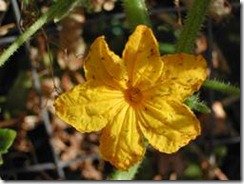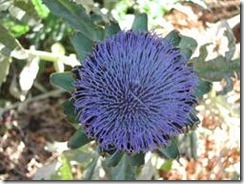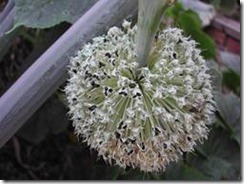Seeds of change in the veggie patch
Circa 2004: from the book Tales of a Backyard Farmer
It’s a Sunday morning in a strange summer of grey days and stormy weather. Today though has dawned bright and clear, and that’s more than can be said for me, standing in the garden and waiting for my engine to start.
Yet these slow moments bring their own rewards – out over the school oval beyond the veggie patch I see an Australian White Ibis swing gracefully outwards and upwards, heading off over the suburbs. These large snowy-white water birds have black heads and long curved black bills used for fossicking about for prey in shallow waters.  One of the great sights of Australian agriculture is to see a flock of these birds descend in military formation upon one end of a locust-infested field, and march in line-abreast to the other end, sweeping it clean of these plague insects. For some years now I’ve been doing a bird count from the back garden. With fewer chances than in younger days to go bush walking and bird watching, it has been one of life’s real pleasures to see nature visiting me instead. This Ibis brings my veggie patch bird count to 41, and gives me some small measure of hope.
One of the great sights of Australian agriculture is to see a flock of these birds descend in military formation upon one end of a locust-infested field, and march in line-abreast to the other end, sweeping it clean of these plague insects. For some years now I’ve been doing a bird count from the back garden. With fewer chances than in younger days to go bush walking and bird watching, it has been one of life’s real pleasures to see nature visiting me instead. This Ibis brings my veggie patch bird count to 41, and gives me some small measure of hope.
Airport lounges aren’t my favourite places, but there are compensations – there is usually a book store with the latest releases, plenty of seats to slump in and some spare moments for reading.  On a trip through Melbourne to Launceston recently I discovered Tim Low’s “The New Nature”. Tim’s thesis is that nature is moving into our Australian cities, with rare and endangered species turning up in industrial zones to take advantage of the changes wrought by man. That wildlife welcomes our sewage, rare animals need weeds, and that wildlife-friendly gardens are not so friendly. In our forests, native pests, including lyrebirds and rainforest trees, are now a force to reckon with. Sheep are being kept in national parks to save rare birds and plants. And that we need to know why.
On a trip through Melbourne to Launceston recently I discovered Tim Low’s “The New Nature”. Tim’s thesis is that nature is moving into our Australian cities, with rare and endangered species turning up in industrial zones to take advantage of the changes wrought by man. That wildlife welcomes our sewage, rare animals need weeds, and that wildlife-friendly gardens are not so friendly. In our forests, native pests, including lyrebirds and rainforest trees, are now a force to reckon with. Sheep are being kept in national parks to save rare birds and plants. And that we need to know why.
This summer in the veggie patch veggies are in short supply. It’s not the grey weather that is to blame; it’s that I’m growing vegetables for their seeds, not their leaves. This means veggies occupy ground for as much as a year longer than normal, as many vegetables are biennial, setting seed heads only in their second year. Whereas in other years I would have ripped out these plants to make way for more edible crops, this year I’m quietly enjoying the rare and wonderful flower shows put on by carrots, amaranth, artichokes and chicory, to name a few.
And while some folk might decry the arrival of the coffee bean and its impact on agricultural land, it too makes a contribution to my seed saving, in the form of wonderful re-sealable tins and jars. Down in the back shed are old Balfour’s cake trays holding dozens of these tins, each labelled with the seed type and the year I grew it.
The  trampoline out on the lawn hasn’t seen much jumping since my lads outgrew it, but it’s the perfect height and texture to flog the lettuce and silverbeet plants upon as I separate their seeds from the seed stalks. I use onion bags to filter radish seeds from their chaff, and plastic ice-cream containers to winnow the fine seeds from onions and lettuces. Amongst these simple pleasures I spend my spare hours, trying to forget the hectic strain of competing in a high-technology world.
trampoline out on the lawn hasn’t seen much jumping since my lads outgrew it, but it’s the perfect height and texture to flog the lettuce and silverbeet plants upon as I separate their seeds from the seed stalks. I use onion bags to filter radish seeds from their chaff, and plastic ice-cream containers to winnow the fine seeds from onions and lettuces. Amongst these simple pleasures I spend my spare hours, trying to forget the hectic strain of competing in a high-technology world.
 Well south of the veggie patch, and just about as far south as one can go, the Larsen B iceshelf off the coast of Antarctica has crumbled and disappeared into the sea. Glaciers that fed it have sped up and are pouring ice at an even faster rate into the cold Antarctic waters. This is only one of thousands of indicators that mankind’s impact on his environment is accelerating changes over which we have no control. Climate change is one of the key factors in the collapse of civilisations. (I know this, because I’ve been spending my pocket money in airports again – this time I purchased Jared Diamond’s ‘Collapse’, sub-titled: ‘How Societies Choose to Fail or Survive’).
Well south of the veggie patch, and just about as far south as one can go, the Larsen B iceshelf off the coast of Antarctica has crumbled and disappeared into the sea. Glaciers that fed it have sped up and are pouring ice at an even faster rate into the cold Antarctic waters. This is only one of thousands of indicators that mankind’s impact on his environment is accelerating changes over which we have no control. Climate change is one of the key factors in the collapse of civilisations. (I know this, because I’ve been spending my pocket money in airports again – this time I purchased Jared Diamond’s ‘Collapse’, sub-titled: ‘How Societies Choose to Fail or Survive’).
If mankind were to disappear as a species from this planet, changes would still continue. There is no doubt that mankind has mixed the gene pool across the globe by transporting exotic seeds and animals to all corners of the landscape. Here in the veggie patch I’m growing out seeds to try to preserve some of our wonderful bio-diversity in vegetable varieties for future gardeners and for my own pleasure.
No conceit imaginable could see such quiet activity changing the course of human history as we face up to what some have termed ‘ecocide’ – societal collapse brought about by sudden environmental change. Yet it brings to me personally a sense of being able to do what I can do in my own small corner of our world.







0 comments:
Post a Comment